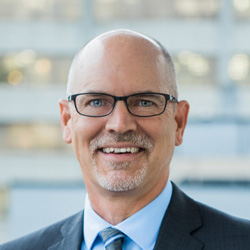The Goose and the Basket of Golden Eggs
Jun 18, 2017
 If you had a goose that laid golden eggs, which is worth more: the eggs already in your basket or those yet to come? What value do you put on the goose? If the goose is still laying eggs, but you have a basket full already, do you just insure the eggs and self-insure the loss of the goose? If your goose gets cooked, would you accept a substitute that lays part-time or produces eggs at half the size? Hmmmm.
If you had a goose that laid golden eggs, which is worth more: the eggs already in your basket or those yet to come? What value do you put on the goose? If the goose is still laying eggs, but you have a basket full already, do you just insure the eggs and self-insure the loss of the goose? If your goose gets cooked, would you accept a substitute that lays part-time or produces eggs at half the size? Hmmmm. What do you think is your most valuable financial asset? Some might say their business, or house, or pension, or maybe their investment portfolio. Some people would be right; in particular, at the point in time that these assets have grown to a scale to provide a lifetime of income (or shelter) to themselves and their family with minimal further effort. Everyone aspires to this tipping point to financial security and independence, when labour is no longer necessary to support our lifestyles.
Many people would overlook the value of their “human capital” in focusing on the financial assets that have accrued from it. They take for granted that there will be enough time to convert their “human capital” potential value into actual financial capital over their working lifetime, thereby funding both current and future needs. This oversight can be perilous if unforeseen events impact the realized capital value.
There are many risks that should be addressed in a comprehensive financial plan. Some risks, such as liquidity, volatility, or systemic risk can be minimized through diversification. Yes, this means “don’t put all your eggs in the same basket” but it also means, “use more than one path to carry your baskets forward”. Diversification of tools, techniques and strategies in one coordinated plan help defray risks of taxation and legal rule changes, behavioural modifications, or relationship changes. But some risks can’t be diversified away.
The most important risks to solve are catastrophic risks. Many of these risks relate to the ultimate source of funding financial independence: our “human capital”. Our lifetime earnings or lifetime cost savings through our efforts have a value. Part of that value will support our daily lifestyle for ourselves and our dependents, and part of our capital value will be saved, invested and converted into financial capital for future retirement income. So how would you value your “human capital”?
Many people pursue post-secondary education or training to enhance their value. Parents save money for this future investment in education, students take loans to invest in themselves and corporations fund extensive training programs because the acquired knowledge and skill enhances someone’s productivity and with it, their economic value.
We are all used to valuing things we buy based on comparison. We can compare our house, car or TV to other comparables and get an idea of what each is worth. But, businesses are usually valued based on the cash flow they generate and sell at a multiple of this earning power. Commercial real estate is also valued based on the net rental income it generates to the owner(s). Similarly, “human capital” can be present valued at a multiple of the annual earning rate of the individual over their working time horizon. Accounting for increases in future earnings due to skill, experience or simply wage inflation would increase the cash flow stream being capitalized through the multiple.
So, what would a reasonable multiple be to value “human capital”? Generally, we would assume that we would need enough value in financial capital, invested under a similar Investment Policy Statement at similar risk tolerances and asset allocations, to earn the same assumed return that the individual and/or their family would have earned investing from saved “human capital” into financial capital.
In other words, someone of low risk tolerance, assumed to be making 2% on invested real returns would need 100/2= 50x their income in financial capital to replace their income. Likewise, someone of moderate risk tolerance making a real 5% return would need 100/5= 20x their inflation adjusted earning power in financial capital to replace the cash flow. Obviously, it takes more capital today to replace income than when guaranteed interest yields were 10% and 10x your income in banked savings could replace income. You may see the parallel here between “human capital” valuation and retirement income planning.
Most catastrophic financial risks on “human capital” are health-related. A shortage of capital conversion time can be devastating to achieving financial planning independence. This is most acute when injury or illness suspend or eliminate earning power. Families are at risk when “human capital” is lost in premature death or critical illness. Even extraordinary medical expenses, long-term care costs, or injury liabilities can be catastrophic to absorb or self-insure. These risks should rightly be shifted away and insured with third party insurers. Make no mistake, if they happen, diversification won’t do!
Insurers’ rule of thumb is 20x earnings for “human capital”. For some reason, many people would sell out their capital value to their own family, at premature death or permanent disability, for a whole lot less than they would want or accept in retirement capital. What would you sell your future paychecks for? How much less are you willing to accept at death or disability?
Let us help you make an informed choice about eggs and geese!
You might also be interested in...
Why do we plan?
Knowing where you are translates into knowing where you’re going, and we hope to provide every client with the trust and confidence to navigate through the waters of their financial lives.
Learn More
Popular Categories
Search Insights
Book a meeting
Schedule a meeting with an RGF Advisor.







